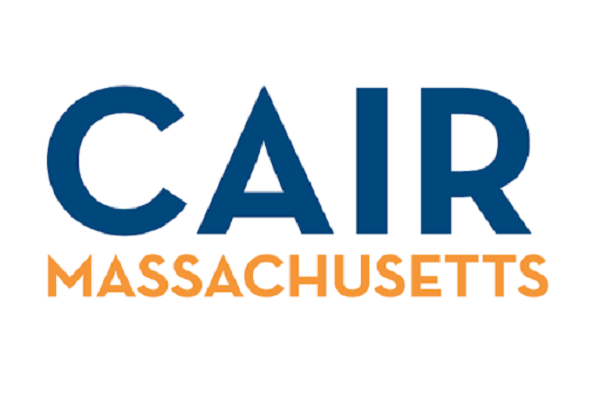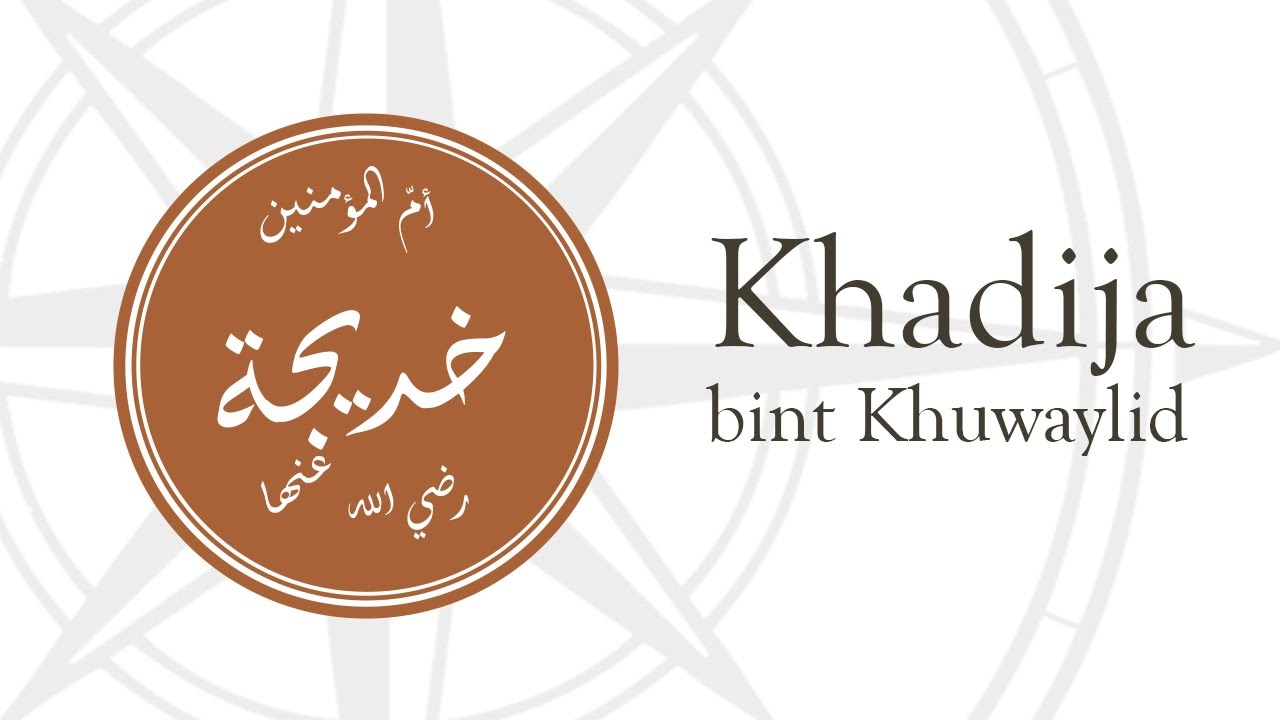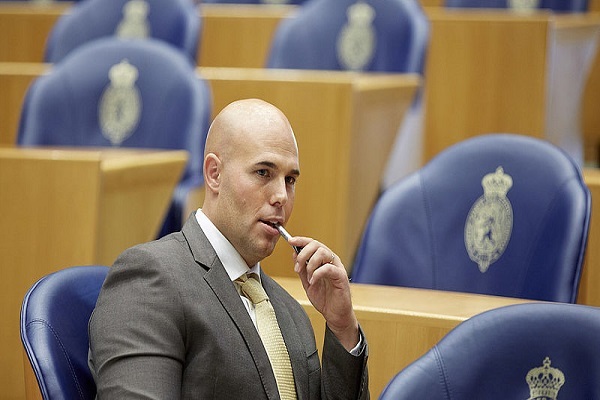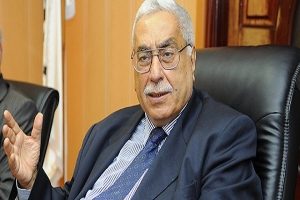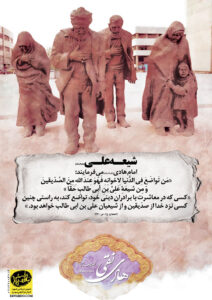According to rahyafte (the missionaries and converts website):
1. Introduction

2. “Brown” and Foreign as a Cultural Category
-
In November 2015, Kayla Gerber, a 24-year-old non-Muslim actress, singer, dancer, and one-time finalist in Miss Canada National, was assaulted by a man who “pinned her against a wall” and screamed at her to “take off [her] f****n hijab and get the f**k out of his country” (Haines 2015). Gerber is Jamaican-Canadian and “had wrapped her scarf around her head to keep her ears warm” (The Caribbean Camera Inc. 2015).
-
In December 2015, an “older, white man” harassed Juan Calero, a 21-year-old non-Muslim Latino NYU student, calling Juan “a terrorist” and telling him “to leave the country”. NBC News reported that Calera said that he “is not Muslim, but is often mistaken as one because of his beard and curly hair” and that this was the fourth time he had experienced anti-Arab and anti-Muslim harassment (Akbar 2015).
-
In 2016, Laolu Opebiyi, a British Nigerian Christian man, experienced a phenomenon labeled “flying while Muslim” on an EasyJet flight when he was “removed from a plane by armed police at Luton airport after a fellow passenger read a message on his mobile phone about ‘prayer’ and reported him as a security threat”. “Flying while Muslim” colloquially refers to the act of being profiled or harassed by another passenger, airline staff, or security personnel for being perceived to be Muslim during air travel, possibly resulting in removal from a plane or disruption to a booked flight (NPR 2018). Opebiyi was texting on his phone in a “conference call prayer group, which was [titled] ‘ISI men’—an acronym for ‘iron sharpens iron’, from the Bible quote ‘As iron sharpens iron, so one person sharpens another’.” (Biblica, Inc. 2011).
-
In 2017, a “routine trip to a strip mall in Canada almost turned deadly for a [non-Muslim] Latino family when Mark Phillips, baseball bat in hand, approached Sergio Estepa, Mari Zambrano, their 13-year-old son and a friend, informing them that they were under arrest for being ‘ISIS terrorists’.” (Rosario 2017). In footage filmed by Zambrano, Phillips is heard shouting, “Terrorist. Terrorist. We have a French terrorist here” in response to the family speaking Spanish and then “‘ISIS! ISIS! We have ISIS right here’, referring to the militant group Islamic State in Iraq and Syria”. Estepa sustained injuries, including “a cracked rib and large bruise” in the attack and Phillips was arrested and “charged with aggravated assault and three counts of assault with a weapon”. (Dubinksi 2017).
The effect of using Muslim as a cultural identity includes reifying South Asian and Arab hegemony in Muslim discourses. One particular issue is using “Arab and South Asian” as a synonym for Muslim, or in a grouping that is intended to be open to all Muslims but only uses some names and ethnicities. […] [T]he cultural category has resulted in the exclusion of Black Muslims in the discussion of Muslim civil liberties or the effects of Islamophobia. Black American Muslims have been under surveillance and discrimination many decades before 9/11.

3. More than Roses and Meet-And-Greets to Fight Islamophobia
This syllabus reframes “Islamophobia” as “anti-Muslim racism” to more accurately reflect the intersection of race and religion as a reality of structural inequality and violence rooted in the longer history of US (and European) empire building. … It also connects the histories of various racial logics that reinforce one another, including anti-Muslim racism, anti-Black racism, anti-Latinx racism, anti-Arab racism, and anti-South Asian racism.
By focusing on understanding Islamophobia as anti-Muslim racism, this syllabus challenges the idea that the problem is one of individual bias and that simply knowing more about Islam will necessarily lead to a decrease in anti-Muslim racism.
A small group of foundations and wealthy donors are the lifeblood of the Islamophobia network in America, providing critical funding to a clutch of right-wing think tanks that peddle hate and fear of Muslims and Islam—in the form of books, reports, websites, blogs, and carefully crafted talking points that anti-Islam grassroots organizations and some right-wing religious groups use as propaganda for their constituency. Some of these foundations and wealthy donors also provide direct funding to anti-Islam grassroots groups. … Altogether, … seven charitable groups provided $42.6 million to Islamophobia think tanks between 2001 and 2009.(Ali 2011)
Suspicion of Muslims guides our foreign policy: Teenagers and other civilians across the Middle East have been killed or seriously injured by US drone strikes and bombs (Watson Institute for International & Public Affairs n.d.). Due to the decades-long War on Terror, US drones have killed civilians at weddings (Almasmari 2013) and taught young children to fear the sky. And civilians living in at least five of the countries that are on the Muslim Ban list have been or are currently on the receiving end of US bombs and airstrikes (Mohdin 2017). The US justifies this violence based on the narrative that all Muslims are inherently prone to “terror” and that civilian casualties are just the price we need to pay for national security.
Our nation denies the Muslim men still being held at Guantanamo Bay (Fox 2018)—men who were never charged with a crime—the right to a trial. When Trump was elected, progressives everywhere feared he would implement a “Muslim registry”, a policy that already happened after 9/11 when some immigrants from 24 majority-Muslim countries were required to register and regularly check-in (Lind 2016) with government officials. The program, called the National Security Entry-Exit Registration System, or NSEERS, helped the government fine, arrest, and deport Muslims. Today, Muslims are among those that ICE rounds up for deportation. This past Ramadan, Somali Muslim immigrants were hindered from freely practicing their faith while detained in an ICE facility in Florida (Saleh 2018).
4. When Faith Is Apparently Still the Problem
5. Conclusions
- (1)
-
Increase internal education and training on racial justice. By undergoing trainings on anti-racism organizing, cultural competency, and critical anti-Islamophobia activism, organizations and institutions will be better equipped to understand the structural underpinnings of Islamophobia. This means any campaigns can draw on wider historical memory and avoid strategies that may not get to the roots of organized Islamophobia.
- (2)
-
Strategically engage in solidarity practices. Advocates should work on challenging the structural underpinnings of anti-Blackness, xenophobia, and other oppressive forces that impact multiple communities. These forces affect different ethnic groups of Muslims, which limits the capacity of those groups to advocate for justice. Additionally, since these forces all stem from one specific foundation, by challenging them together, it will become easier to assess what tactics will work against Islamophobia specifically. More importantly, by undermining the institutions and systems that allow for Islamophobia to exist, Islamophobia will also lessen.
- (3)
-
Center the leadership and guidance of Muslims who are most likely to be targeted through violent policy and vigilante action. This can be done by conducting more community needs assessments, consulting with grassroots leaders in a more equitable manner, and ensuring that resources are provided to those who are on the front lines so that they can invest more of their time and energy into this work. Advocates should actively aim for more inclusion in the activism space for underrepresented Muslim voices—and not just millennial or ‘woke’ or ‘cool’ Muslims who are easily consumable by the general American public.
- (4)
-
Shift the narratives about Muslims in the media to also amplify the stories of Muslims who attend mosque events, are affiliated with a house of worship, and/or dress more conservatively. Focusing on the narratives of Muslims who are proudly unmosqued and have no connection to a house of worship is not the same as amplifying the voices of the loved ones of people who were killed while at the mosque (Page 2018) or capture the pain of those who have faced arson in their house of worship (Cuevas 2017). Additionally, focusing on liberal Muslimah media figures (Shukla 2016) or “culturally-Muslim” male (Mallenbaum 2017) comedians (Firestone 2017) does not mean that a serious-looking long-bearded man in a thobe (an ankle-length long-sleeved loose flowing outfit), or a woman wearing a niqab (face veil), is going to feel the benefits of that acceptance. These individuals are still seen as the “foreign” and dangerous risk. While those Muslim narratives may not be as “stereotype-breaking” (Global Fund for Women 2017), it is important that advocates hold a space for a truly diverse set of voices and include not just the voices that are currently included but also additional voices that are underrepresented.
- (5)
-
Improve the diversity in the room and work to ensure inclusion in those spaces. Cast a wider net that better reflect the racial demographics of American Muslims. Any anti-Islamophobia convening or gathering should include people who represent more of the variety of stories, priorities, and expertise that exist within the American Muslim space. Additionally, reach out to Muslims of all different backgrounds, and especially be more cognizant of inclusion for those who practice rituals of religion daily. The commercialization of faith practices—including Ramadan decorations in stores or hijabs/headscarves for sale in department stores—alone will not lead to better policies for all. That system of oppressive policies is already in place and it is critical for advocates to continue protecting religious plurality in the United States.
- (6)
-
Resist narrow and rigid classifications of which communities are impacted by Islamophobia. Push back against the idea of embracing “Muslim” as a cultural category and placing it in contrast to other categories like Black, East Asian, or Latino. “Muslim” is not a cultural category, and American Muslims come from all different ethnic backgrounds. Thus, indicators of religiosity—like the headscarf, a beard, or communications about prayer—often lead to people of all backgrounds being perceived as Muslim and therefore targeted. Since whether someone is “perceived to be Muslim” often rests on visual cues that stem from the practice of religious tenets, more focus is needed on learning about religion and not letting fundamentalism from other parties impact how we go about understanding Islam in America.
- (7)
-
Undertake a deeper historical analysis. Advocates should look further into the history of Islam in America, and review the deep, multi-century-long discussions about Islam, democracy, and interfaith societies that span the globe. More research is needed on Muslims in the United States, and especially on communities that have been here for generations, specifically examining their strategies and tactics for challenging discrimination.
Funding
Acknowledgments
Conflicts of Interest
References
- Abdelrahman, Hadiya. 2017. 5 Badass Muslim Women Who Have Led Feminist Movements around the World. Everyday Feminism. July 30. Available online: https://everydayfeminism.com/2017/07/badass-muslim-feminists/ (accessed on 29 July 2018).
- Abdul Khabeer, Su’ad. 2018. Islamophobia is Racism: Resource for Teaching & Learning about anti-Muslim Racism in the United States. April 4. Available online: https://islamophobiaisracism.wordpress.com/ (accessed on 29 July 2018).
- ACLU of Washington. n.d. Timeline of the Muslim Ban; ACLU of Washington. Available online: https://www.aclu-wa.org/pages/timeline-muslim-ban (accessed on 29 July 2018).
- Akbar, Farah. 2015. NYU Asks Students to Help Report Harassment Targeting Muslim Community. NBC News; NBC Universal Media, LLC, December 9. Available online: https://www.nbcnews.com/news/asian-america/nyu-asks-students-help-report-harassment-targeting-muslim-community-n476581 (accessed on 29 July 2018).
- Al Jazeera. 2018. Who are the Rohingya? Al Jazeera, April 18. Available online: https://www.aljazeera.com/indepth/features/2017/08/rohingya-muslims-170831065142812.html (accessed on 29 July 2018).
- Ali, Wajahat. 2011. Fear, Inc.: The Roots of the Islamophobia Network in America. Washington: Center for American Progress. [Google Scholar]
- Almasmari, Hakim. 2013. Yemen Says U.S. Drone Struck a Wedding Convoy, Killing 14. CNN. December 13. Available online: https://www.cnn.com/2013/12/12/world/meast/yemen-u-s-drone-wedding/index.html (accessed on 26 June 2018).
- Anderson, Craig A., Muniba Saleem, Sara Prot, and Anthony F. Lemieux. 2017. Exposure to Muslims in Media and Support for Public Policies Harming Muslims. Communication Research 44: 841–69. [Google Scholar]
- Annear, Steve. 2015. Coffee, Doughnuts, and a Muslim to Answer Your Questions. The Boston Globe. December 21. Available online: https://www.bostonglobe.com/metro/2015/12/21/couple-sets-ask-muslim-booth-cambridge/aOiTfhSp8wtM5zYhqaWdnO/story.html (accessed on 29 July 2018).
- Aziz, Sahar. 2011. Time to Address Violence against Muslim Women. Institute for Social Policy and Understanding, November 2. Available online: https://www.ispu.org/time-to-address-violence-against-muslim-women/ (accessed on 29 July 2018).
- Basu, Moni. 2016. 15 Years after 9/11, Sikhs Still Victims of Anti-Muslim Hate Crimes. CNN. September 15. Available online: https://www.cnn.com/2016/09/15/us/sikh-hate-crime-victims/index.html (accessed on 6 September 2018).
- Berger, Yotam, and Jack Khoury. 2017. Jewish Extremist Leader in Israel Faces Charges of Incitement, Threats. Hareetz. November 13. Available online: https://www.haaretz.com/israel-news/jewish-extremist-leader-faces-charges-of-incitement-threats-1.5465176 (accessed on 29 July 2018).
- Besheer, Mohamed. 2018. New Estimates Show U.S. Muslim Population Continues to Grow. Pew Research. January 3. Available online: http://www.pewresearch.org/fact-tank/2018/01/03/new-estimates-show-u-s-muslim-population-continues-to-grow/ (accessed on 6 September 2018).
- Beydoun, Khal. 2014. Antebellum Islam. Howard Law Journal 58: 141. [Google Scholar] [CrossRef]
- Beydoun, Khaled. 2016. The Myth of the ‘Moderate Muslim’. Al Jazeera. May 20. Available online: https://www.aljazeera.com/indepth/opinion/2016/05/myth-moderate-muslim-160511085819521.html (accessed on 29 July 2018).
- Beydoun, Khaled. 2018. American Islamophobia: Understanding the Roots and Rise of Fear. Oakland: University of California Press Books. [Google Scholar]
- Biblica, Inc. 2011. Holy Bible, New International Version. Available online: https://www.biblegateway.com/passage/?search=Proverbs+27%3A17&version=NIV (accessed on 29 July 2018).
- Blades, Lincoln Anthony. 2017. Violent Extremists Can Be Christians, and It’s Time We Talk about It. Teen Vogue. September 1. Available online: https://www.teenvogue.com/story/violent-extremists-can-be-christians-and-its-time-we-talk-about-it (accessed on 29 July 2018).
- Boyd, J. Wesley. 2016. The Dangers of Countering Violent Extremism (CVE) Programs. Psychology Today. July 19. Available online: https://www.psychologytoday.com/us/blog/almost-addicted/201607/the-dangers-countering-violent-extremism-cve-programs (accessed on 29 July 2018).
- Carey, Julie. 2017. ‘You Killed My Daughter!’ Slain Muslim Teen’s Father Shouts at Suspect in Court. NBCUniversal. October 13. Available online: https://www.nbcwashington.com/news/local/Hearing-Set-for-Man-Charged-in-Muslim-girls-Death-450732843.html (accessed on 29 July 2018).
- CBS News. n.d. 30 of Donald Trump’s wildest quotes. CBS News. Available online: https://www.cbsnews.com/pictures/wild-donald-trump-quotes/12/ (accessed on 29 July 2018).
- Clark, Liat. 2014. The ‘Eight Faces’ of Anti-Muslim trolls on Twitter. Wired UK. July 4. Available online: https://www.wired.co.uk/article/anti-muslim-twitter-trolls-study (accessed on 29 July 2018).
- Copoglu, Sumeyye. 2016. Conquering People’s Hearts with a Single Rose: “Hello, We’re Muslims!”. Mvslim. March 17. Available online: http://mvslim.com/conquering-peoples-hearts-with-a-single-rose-hello-were-muslims/ (accessed on 29 July 2018).
- Cornell University Library. 2018. Exhibition: Islam in Asia: Diversity in Past and Present: Muslim Populations. August 30. Available online: https://guides.library.cornell.edu/IslamAsiaExhibit (accessed on 6 September 2018).
- Cox, Daniel. 2017. Don’t Bet on the Emergence of a ‘Religious Left’. ABC News. April 20. Available online: https://fivethirtyeight.com/features/dont-bet-on-the-emergence-of-a-religious-left/ (accessed on 29 July 2018).
- Cuevas, Mayra. 2017. Spate of mosque fires stretches across the country. CNN. March 2. Available online: https://www.cnn.com/2017/03/02/us/mosque-fires-2017/index.html (accessed on 29 July 2018).
- Davidman, Lynn. 2007. The New Voluntarism and the Case of Unsynagogued Jews. In Everyday Religion: Observing Modern Religious Lives. Edited by Nancy. T. Ammerman. New York City: Oxford University Press, pp. 51–67. [Google Scholar]
- Diab, Khaled. 2018. A secular Muslim’s guide to drinking alcohol during Ramadan. Washington Post. May 31. Available online: https://www.washingtonpost.com/outlook/a-secular-muslims-guide-to-drinking-alcohol-during-ramadan/2018/05/31/5b2fdf80-6449-11e8-a69c-b944de66d9e7_story.html?noredirect=on&utm_term=.4acb5a3d756b (accessed on 29 July 2018).
- Dubinksi, K. 2017. Man in southwestern Ontario charged after family attacked with bat amid shouts of ‘ISIS’. CBC News. December 8. Available online: https://www.cbc.ca/news/canada/london/family-attacked-bat-yelling-isis-st-thomas-1.4439437 (accessed on 6 September 2018).
- Duss, Matthew. 2015. Fear, Inc. 2.0: The Islamophobia Network’s Efforts to Manufacture Hate in America. Washington: Center for American Progress. [Google Scholar]
- Eid, A. 2014. About Unmosqued the Movie. Available online: http://www.unmosquedfilm.com/about/ (accessed on 14 September 2018).
- Elliott, Andrea. 2011. The Man Behind the Anti-Shariah Movement. The New York Times. July 30. Available online: https://www.nytimes.com/2011/07/31/us/31shariah.html (accessed on 29 July 2018).
- Firestone, Lonnie. 2017. How Aziz Ansari Explained His Bacon-Eating to His Devout Muslim Parents. Vanity Fair. June 7. Available online: https://www.vanityfair.com/hollywood/2017/06/aziz-ansari-master-of-none-moth-bacon (accessed on 29 July 2018).
- Fox, Ben. 2018. US Military Plans for Future at Guantanamo Because of Trump. AP News. June 7. Available online: https://www.apnews.com/ca3a339b1ada4f229310a2bcd483fd81/US-military-plans-for-future-at-Guantanamo-because-of-Trump (accessed on 29 July 2018).
- Global Fund For Women. 2017. 9 Inspiring Muslim Women Shattering Stereotypes. Global Fund For Women. June 29. Available online: https://www.globalfundforwomen.org/9-inspiring-muslim-women-shattering-stereotypes/#.W14E4NJKjIV (accessed on 29 July 2018).
- Gray, Noah, and Mj Lee. 2015. Trump to CNN: ‘I love the Muslims’. CNN Politics. September 20. Available online: https://www.cnn.com/2015/09/19/politics/donald-trump-muslims-controversy/index.html (accessed on 29 July 2018).
- Green, Emma. 2017. How America Is Transforming Islam. December 31. Available online: https://www.theatlantic.com/politics/archive/2017/12/muslims-assimilation-weddings/549230/ (accessed on 29 July 2018).
- Haines, Avery. 2015. Toronto Woman Assaulted after Her Scarf Is Mistaken for Hijab. City News Toronto. November 20. Available online: https://toronto.citynews.ca/2015/11/20/toronto-woman-assaulted-after-her-scarf-is-mistaken-for-hijab/ (accessed on 29 July 2018).
- Hill, Margari. 2015a. Study of Intra-Muslim Ethnic Relations: Muslim American Views on Race Relations. Available online: http://www.muslimarc.org/interethnic/ (accessed on 6 September 2018).
- Hill, Margari. 2015b. What’s In a Name?: Using “Muslim” as a Cultural Category Erases and Stereotypes. Muslim ARC. May 13. Available online: http://www.muslimarc.org/whats-in-a-name/ (accessed on 29 July 2018).
- Islam, Namira. 2018a. An anti-Muslim narrative has shaped policy for decades. The travel ban will make it worse; Vox Media, June 27. Available online: https://www.vox.com/first-person/2018/6/27/17510560/travel-ban-muslim-trump-islamophobia (accessed on 29 July 2018).
- Islam, Namira. 2018b. Build with the People Who Love You. April 23. Available online: https://medium.com/@namira.islam/build-with-the-people-who-love-you-a42943bbe04c (accessed on 29 July 2018).
- Islam, Namira. 2018c. Modifying Silk Ring Theory for Allyship. April 16. Available online: https://medium.com/@namira.islam/modifying-silk-ring-theory-for-allyship-c7ae4963912d (accessed on 29 July 2018).
- Jacobson, Louis. 2018. Is Mike Pence Right That Religion Is Gaining New Life in US? PolitiFact. May 16. Available online: https://www.politifact.com/truth-o-meter/statements/2018/may/16/mike-pence/mike-pence-right-religion-gaining-new-life-us/ (accessed on 29 July 2018).
- Jenkins, Jacobson. 2017. Nobody is Laughing at the Religious Left in 2017. Think Progress. December 13. Available online: https://thinkprogress.org/2017-is-the-year-trump-and-the-religious-right-made-the-religious-left-unavoidable-3e89528104b6/ (accessed on 29 July 2018).
- Kaleem, Jaweed. 2017. At the nation’s only Latino mosque, Trump’s immigration policies have ‘changed everything’. Los Angeles Times. March 10. Available online: http://www.latimes.com/nation/la-na-latino-muslims-2017-story.html (accessed on 29 July 2018).
- Khalil, Yameen. 2014. Christmas, Ramadan: Holidays with Similarities. Tulsa World. June 28. Available online: http://muslimwriters.org/2014/06/28/christmas-ramadan-holidays-with-similarities/ (accessed on 29 July 2018).
- Khan, Sidrah Moiz. 2012. The Rise of the Hijabista. The Express Tribune. November 19. Available online: https://tribune.com.pk/story/466267/the-rise-of-the-hijabista/ (accessed on 29 July 2018).
- Kid, T. 2013. A Muslim’s Adventures in Pork. Vice Media LLC, September 22. Available online: https://www.vice.com/en_us/article/exm4zp/a-muslims-adventures-in-pork (accessed on 29 July 2018).
- Kloub, Mohammed. 2016. Yes, there is such a thing as a secular Muslim. The Seattle Globalist. March 30. Available online: http://www.seattleglobalist.com/2016/03/30/secular-muslim-non-practicing-islam-religion-kloub/47754 (accessed on 14 September 2018).
- Krugman, Paul. 2017. The Conscience of a Liberal. New York: W. W. Norton. [Google Scholar]
- Lind, Dara. 2016. Donald Trump’s Proposed “Muslim Registry”, Explained. Vox. November 16. Available online: https://www.vox.com/policy-and-politics/2016/11/16/13649764/trump-muslim-register-database (accessed on 29 July 2018).
- Lipka, Michael. 2015. The Most and Least Racially Diverse U.S. Religious Groups. Pew Research Center. Available online: http://www.pewresearch.org/fact-tank/2015/07/27/the-most-and-least-racially-diverse-u-s-religious-groups/ (accessed on 6 September 2018).
- Maiese, Michelle. 2003. Dehumanization. (The Beyond Intractability Project). Beyond Intractability. July. Available online: https://www.beyondintractability.org/essay/dehumanization (accessed on 29 July 2018).
- Mallenbaum, Carly. 2017. ‘Master of None’: Aziz Ansari opens up about his Muslim upbringing. USA Today. May 17. Available online: https://www.usatoday.com/story/life/entertainthis/2017/05/17/master-of-none-aziz-ansari-muslim/101693552/ (accessed on 29 July 2018).
- Mamdani, Mahmood. 2002. Good Muslim, Bad Muslim: A Political Perspective on Culture and Terrorism. American Anthropologist 104: 766–775. Available online: https://islamophobiaisracism.files.wordpress.com/2017/03/mamdani-good-muslim-bad-muslim-2002-american_anthropologist.pdf (accessed on 14 September 2018).
- McCrummen, Stephanie. 2017. ‘Love Thy Neighbor?’. The Washington Post. July 1. Available online: https://www.washingtonpost.com/national/in-a-midwestern-town-that-went-for-trump-a-muslim-doctor-tries-to-understand-his-neighbors/2017/07/01/0ada50c4-5c48-11e7-9fc6-c7ef4bc58d13_story.html?noredirect=on&utm_term=.763b391af250 (accessed on 29 July 2018).
- McPhail, Mark. 2002. The Rhetoric of Racism Revisited: Reparations or Separation? Lanham: Rowman and Littlefield Publishers, Inc. [Google Scholar]
- Mohdin, A. 2017. Trump Plans to Block Visas from Seven Muslim-Majority Countries. The US Is Currently Bombing Five of Them. Quartz. January 26. Available online: https://qz.com/895516/which-countries-is-the-us-currently-bombing/ (accessed on 29 July 2018).
- Müller, Karsten, and Carlo Schwarz. 2018. Making America Hate Again? Twitter and Hate Crime Under Trump. March 30. Available online: https://ssrn.com/abstract=3149103 or http://dx.doi.org/10.2139/ssrn.3149103 (accessed on 15 September 2018).
- MuslimARC. 2014. #BlackLivesMatter Toolkit for Muslims. Muslim Anti-Racism Collaborative. December 15. Available online: http://www.muslimarc.org/blacklivesmatter/ (accessed on 29 July 2018).
- MuslimARC. 2016. Indigenous Peoples’ Campaign. Muslim Anti-Racism Collaborative. September 30. Available online: http://www.muslimarc.org/indigenous (accessed on 29 July 2018).
- Nomani, Asra. 2015. As Muslim women, we actually ask you not to wear the hijab in the name of interfaith solidarity. The Washington Post. December 21. Available online: https://www.washingtonpost.com/news/acts-of-faith/wp/2015/12/21/as-muslim-women-we-actually-ask-you-not-to-wear-the-hijab-in-the-name-of-interfaith-solidarity/?utm_term=.4d6c59278782 (accessed on 14 September 2018).
- NPR. 2018. ‘Flying While Muslim’: Profiling Fears After Arabic Speaker Removed from Plane. February 2. Available online: https://www.npr.org/2016/04/20/475015239/flying-while-muslim-profiling-fears-after-arabic-speaker-removed-from-plane (accessed on 6 September 2018).
- OSCE. 2017. Hate Crime against Muslims. Warsaw: Office for Democratic Institutions and Human Rights. [Google Scholar]
- Page, Julia. 2018. Videos of fatal mosque attack show shooter reload as victims seek cover; CBC/Radio-Canada, April 5. Available online: http://www.cbc.ca/news/canada/montreal/alexandre-bissonnette-sentencing-1.4605036 (accessed on 29 July 2018).
- Pew Research Center. 2017. 2017 Survey of U.S. Muslims. Available online: http://www.pewforum.org/2017/07/26/demographic-portrait-of-muslim-americans/ (accessed on 6 September 2018).
- Posner, Saran. 2011. Welcome to the Shari’ah Conspiracy Theory Industry. Religion Dispatches. March 8. Available online: http://religiondispatches.org/welcome-to-the-shariah-conspiracy-theory-industry/ (accessed on 29 July 2018).
- Rainer, Thomas. 2007. Ten Surprises about the Unchurched. Christianity Today. July. Available online: https://www.christianitytoday.com/pastors/2007/july-online-only/102704.html (accessed on 29 July 2018).
- Rifai, Ryan. 2016. Report: Islamophobia Is a multimillion-Dollar Industry. Al Jazeera. June 24. Available online: https://www.aljazeera.com/indepth/features/2016/06/report-islamophobia-multi-million-dollar-industry-160623144006495.html (accessed on 29 July 2018).
- Rosario, Justin. 2017. Anti-Muslim Bigot Attacks “Terrorist” Latino Family with Baseball Bat. The Daily Banter. December 11. Available online: https://thedailybanter.com/issues/2017/12/11/anti-muslim-bigot-attacks-terrorist-latino-family-with-baseball-bat/ (accessed on 6 September 2018).
- Rozen, Courtney. 2017. Ramadan Is Major Time for Charitable Donations in DC. NBC Washington. June 23. Available online: https://www.nbcwashington.com/entertainment/the-scene/Donations-From-DC-Area-Muslims-Power-Local-Charities-During-Ramadan-430414353.html (accessed on 29 July 2018).
- Safi, Michael. 2017. Rise of Hindu ‘Extremist’ Spooks Muslim Minority in India’s Heartland. The Guardian. March 25. Available online: https://www.theguardian.com/world/2017/mar/26/modis-man-flexes-muscular-hinduism-shock-election (accessed on 29 July 2018).
- Salam, Maya. 2018. Party City Offers Ramadan Decorations, a First for a Big U.S. Retailer. The New York Times. April 20. Available online: https://www.nytimes.com/2018/04/20/business/ramadan-party-city-decorations.html (accessed on 29 July 2018).
- Saleh, Maryam. 2018. ICE Detention Center Is Creating Obstacles to Ramadan Observance for Muslim Detainees, Lawyers Say. The Intercept. June 7. Available online: https://theintercept.com/2018/06/07/ice-immigration-detention-ramadan-religious-accomodation/ (accessed on 26 July 2018).
- Sanchez, Olivia. 2017. Five ‘Badass Muslim Women’ Tell Their Stories. The Portland Tribune. August 3. Available online: https://portlandtribune.com/pt/9-news/368047-248115-telling-their-story (accessed on 29 July 2018).
- Sanghani, Radhika. 2016. How the hijab went high-fashion and divided Muslim women. The Telegraph; (Telegraph Media Group), February 18. Available online: https://www.telegraph.co.uk/women/life/how-the-hijab-went-high-fashion-and-divided-muslim-women/ (accessed on 14 September 2018).
- Scholastic. n.d. Nativism in America and Europe. Scholastic. Available online: https://www.scholastic.com/teachers/articles/teaching-content/nativism-america-and-europe/ (accessed on 29 July 2018).
- Shaheen, Jack. 2014. Reel Bad Arabs: How Hollywood Vilifies a People. Northhampton, Massachusetts: Interlink. [Google Scholar]
- Shukla, Sebastian. 2016. Muslim Woman to Appear in Playboy in a Hijab. CNN. September 28. Available online: https://www.cnn.com/style/article/playboy-hijabi-woman-trnd/index.html (accessed on 29 July 2018).
- Soubry, Anna, and Wes Streeting. 2017. The Difference Made by Muslim Charities Is Often Ignored—Especially over Christmas. The Independent. December 19. Available online: https://www.independent.co.uk/voices/muslim-charity-charities-christmas-homelessness-volunteer-a8117116.html (accessed on 29 July 2018).
- Sidahmed, Mazin. 2016. Hundreds at New York mosque mourn woman murdered in ‘hate crime’. The Guardian. September 3. Available online: https://www.theguardian.com/us-news/2016/sep/03/new-york-muslim-murder-bangladeshi-nazma-khanam (accessed on 29 July 2018).
- Solis, Marcus. 2016. Cab driver beaten by passenger in the Bronx speaks out; ABC Inc., May 24. Available online: http://abc7ny.com/news/cab-driver-beaten-by-passenger-in-the-bronx-speaks-out/1353811 (accessed on 29 July 2018).
- Strathern, A. 2013. Why Are Buddhist Monks Attacking Muslims? BBC News. May 2. Available online: https://www.bbc.com/news/magazine-22356306 (accessed on 29 July 2018).
- The Caribbean Camera Inc. 2015. Non-Muslim Suffers Islamaphobic Attack. The Caribbean Camera. November 25. Available online: http://www.thecaribbeancamera.com/community-events/non-muslim-suffers-islamaphobic-attack/ (accessed on 29 July 2018).
- UNESCO. n.d. Xenophobia; United Nations Educational, Scientific, and Cultural Organization. Available online: http://www.unesco.org/new/en/social-and-human-sciences/themes/international-migration/glossary/xenophobia/ (accessed on 29 July 2018).
- War On Want. 2015. Sweatshops in Bangladesh. War On Want. June 23. Available online: https://waronwant.org/sweatshops-bangladesh (accessed on 29 July 2018).
- Warikoo, Niraj. 2017. At Ramadan, Group Pushes Positive Images of Muslims. Detroit Free Press. May 26. Available online: https://www.freep.com/story/news/2017/05/26/new-report-says-muslims-michigan-contribute-lot-medicine-business-politics/332800001/ (accessed on 29 July 2018).
- Washington University Digital Library. 1988. Interview with Mike Wallace. (W. U. Texts, Interviewer). October 12. Available online: http://digital.wustl.edu/e/eii/eiiweb/wal5427.0729.168mikewallace.html (accessed on 6 September 2018).
- Watson Institute for International & Public Affairs. n.d. Civilians Killed and Wounded; Watson Institute Costs of War. Available online: https://watson.brown.edu/costsofwar/costs/human/civilians (accessed on 29 July 2018).
- Weiner, Zoe. 2017. How 16 Hijabi Women Use Makeup to Express Themselves. Bustle. May 22. Available online: https://www.bustle.com/p/how-16-hijabi-women-use-makeup-to-express-themselves-39355 (accessed on 29 July 2018).
- Wright, Robin. 2016. Humayun Khan Isn’t the Only Muslim American Hero. The New Yorker. August 15. Available online: https://www.newyorker.com/news/news-desk/humayun-khan-isnt-the-only-muslim-american-hero (accessed on 29 July 2018).
Source:mdpi.com







